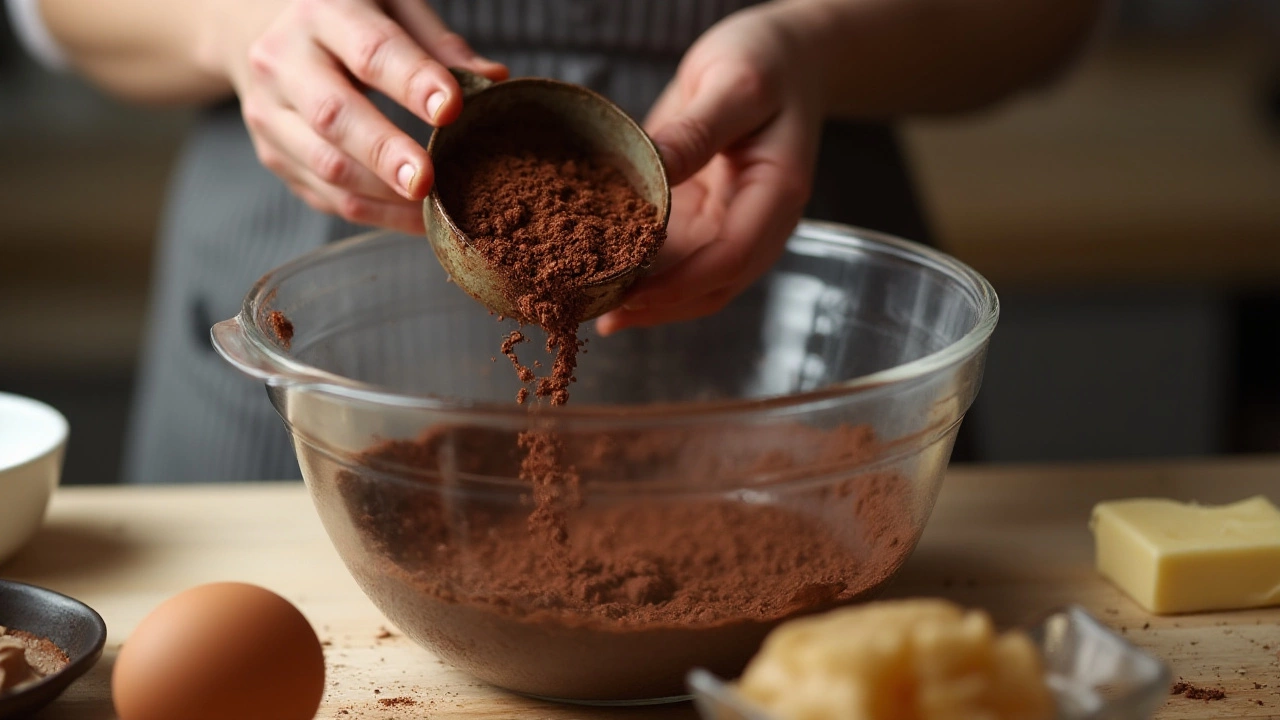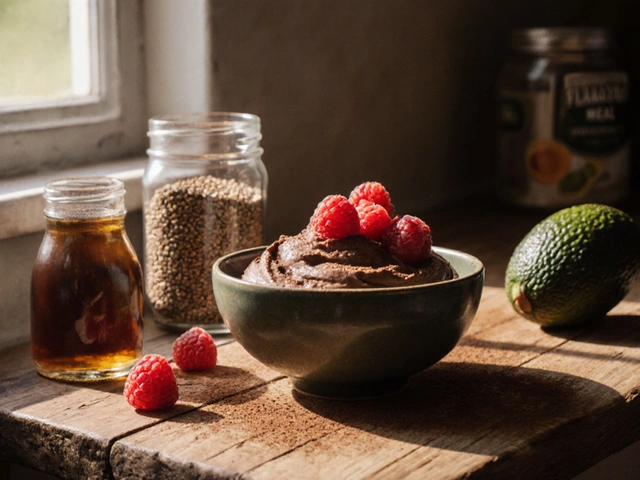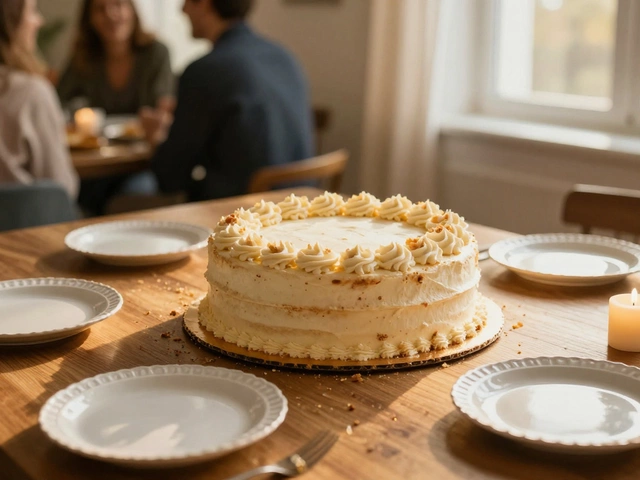Baking the perfect batch of brownies is an art that balances taste and texture. Many encounters a common baking challenge: those lovely brownies start to harden once they’ve cooled. Whether it’s due to time, storage methods, or other baking missteps, watching a decadent treat turn tough can be disheartening.
In this guide, we'll dig into the reasons why brownies lose their softness after baking. We'll uncover the secrets behind making sure they remain delectably chewy long after they've left the oven. Armed with these tips, you will be well-equipped to maintain the lusciousness of your favorite chocolatey squares.
- Understanding Brownie Texture
- The Baking Process Impact
- Ingredient Choice and Their Role
- Storage Tips for Freshness
- Troubleshooting Hard Brownies
- Enhancing with Add-ins or Toppings
Understanding Brownie Texture
Achieving the ideal brownie texture is every baking enthusiast's dream. Brownies can be categorized into three main types: cakey, fudgy, and chewy, each with its distinct characteristics. The difference lies in the balance and proportion of key ingredients like flour, sugar, eggs, and chocolate. Fudgy brownies, often sought after, have a dense, moist texture which can be attributed to higher fat content usually coming from butter and chocolate.
In contrast, cakey brownies rely more on flour and leavening agents such as baking powder to achieve a lighter, more risen result. But what truly makes the difference in achieving that all-loved chewy texture is the mixing method and the protein content. Chewy brownies use a specific balance that includes a fair amount of all-purpose flour, which contains more gluten. Gluten provides that chewy, elastic quality while a moderate amount of sugar caramelizes during baking to add to that desired consistency and rich taste.
Overmixing the batter can also impact the texture by introducing too much air, leaning the texture towards cake-like, or alternatively, developing too much gluten which can make the brownies hard once cooled. One curious insight is the role of sugar; it not only sweetens the dessert but also adds moisture. Brown sugar, with its molasses component, contributes both depth of flavor and additional moisture, often enhancing the chewiness of brownies.
"For maximum chewiness, incorporate melted chocolate and cocoa powder into your brownie mixture," advises Emily Luchetti, a renowned pastry chef. This combination ensures an intense chocolate flavor while keeping the edges slightly crisp and the insides deliciously chewy.
It’s evident that successful brownie recipes are like a delicate science requiring precise measurements and specific ingredient roles. Each component contributes uniquely to texture, flavor, and appearance, making understanding these elements vital in the quest for perfect, chewy brownies that are a treat both for the palate and the senses.
Here's an interesting statistic about chocolate's effect: a study suggests that incorporating 60% to 70% cacao in brownies yields the best chewy results while maximizing flavor depth—enlightening for those on the hunt for this particular brownie style. With these insights, bakers can tailor their approach to control or adapt their brownie textures, ensuring they tantalize every sweet tooth seeking a taste of home-baked perfection.
The Baking Process Impact
The art of baking is as much about precision as it is about passion. The journey your brownies take inside the oven greatly influences their final texture. Baking affects everything from moisture retention to the integrity of the crumb. A key aspect to consider is the temperature at which you bake. Higher temperatures can risk over-baking, especially around the edges, leading to a hardened crust surrounding your soft brownies. Adhering to a moderate baking temperature, usually around 325-350°F, helps in achieving that desired chewy center without compromising the outer layers.
Duration plays an equally critical role. Pulling your brownies from the oven at the right moment is part science, part intuition. Over-bake by just a couple of minutes, and your chewy texture gives way to a toughened exterior and a dry interior. A toothpick test is your friend here – aim for a few moist crumbs clinging to it, not a completely clean one. This signals the brownies are slightly under-baked and will continue to set perfectly as they cool in the pan, away from residual heat.
The baking pan itself shouldn't be underestimated. Material and color can affect heat distribution. Dark metal pans tend to heat up more quickly than lighter ones, potentially causing the edges to cook faster than the center. Opting for a glass or ceramic pan might provide a more even bake, protecting against those hard exteriors.
Even the oven's rack position matters. Placing the pan in the center of the oven typically ensures more uniform cooking. But it all comes down to knowing your oven well, ensuring no hot spots are accelerating the cooking process on one side over another.
"Successful baking is about understanding the subtle interaction between your recipe and your equipment," noted Julia Child in her seminal work on culinary arts. This wisdom underscores the influence of baking methods on the final result, just as much as the ingredients themselves.
Finally, consider covering your brownies halfway through baking with a loosely tented foil. This technique traps steam, helping maintain moisture and ensuring a delightful chewiness. By using these strategies, keeping your beloved brownies deliciously soft becomes less a matter of luck and more a predictable outcome of careful consideration during the baking process.
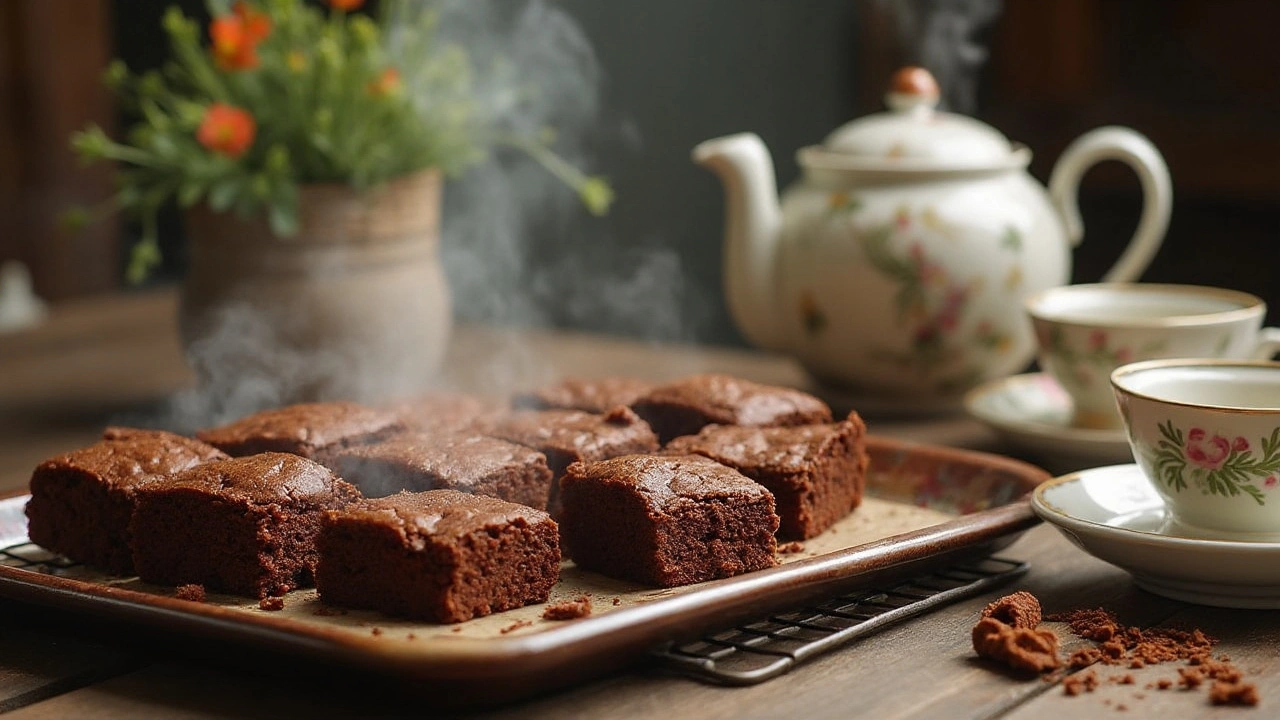
Ingredient Choice and Their Role
Baking a batch of soft brownies involves more than just following a recipe—it's about understanding how each ingredient contributes to the final result. Ingredients play a critical role in achieving the perfect chewy texture or soft finish that brownie lovers crave. People often underestimate the impact of something as simple as the type of flour or chocolate used. For instance, proper selection can transform a standard brownie into a dessert that's moist and delectable.
One key factor lies in the proportion of fat in the recipe. Fats like butter or oil affect moisture content, and using an adequate quantity helps keep the baked goods from drying out. Butter is often favored for its flavor, while oil can result in a moister texture. The amount of sugar is equally important—sugar not only flavors the brownie, but it also helps retain moisture post-baking. Brown sugar, with its molasses content, can enhance both the softness and flavor profile significantly.
Choosing the right type of flour also affects texture and structure. All-purpose flour is a common choice, but some bakers swear by cake flour for even softer brownies. Cake flour has less protein, which means less gluten formation, resulting in a tender crumb. Balancing flour with enough wet ingredients ensures the brownie mixture isn't overly dry once baked. Eggs too play multiple roles: they bind ingredients, add richness, and contribute to the brownie’s earthy, chewy texture.
“The secret to a lusciously chewy brownie is balancing wet and dry ingredients. A little less flour and a bit more egg can make all the difference.” – Julia Child
Chocolate choice—a foundational element—has unique implications for texture and taste. Opt for high-quality, real chocolate over cocoa powder or chocolate-flavored alternatives. Real chocolate bars that are melted into the batter create a sumptuous, fudgy center. If using cocoa powder, supplement it with extra fat to compensate for the lack of inherent cacao butter found in chocolate bars.
In exploring these essential ingredient tips, remember that a small tweak in the selection or ratio of these components can result in significant texture changes. The alchemy behind baking requires a balanced and thoughtful approach, ensuring your brownies maintain that perfect chewiness long after they’ve cooled. This component of tactile pleasure is central to enjoying what many consider to be the ideal dessert experience, establishing an enticing standard for any at-home baker.
Storage Tips for Freshness
Keeping your cherished brownies fresh and chewy after a successful bake is key to maximizing their enjoyment. The way you store these sweet treats can significantly affect their texture and moisture level. One common trick is to let them cool completely before storing. This prevents condensation, which can make them soggy instead of soft. Consider placing a slice of bread in the container with your brownies. This might sound unusual, but the bread helps to maintain the moisture, keeping your brownies from drying out too quickly. Ensure the container is airtight; any exposure to air accelerates drying.
Another interesting fact about storing brownies is the inclusion of certain ingredients. If your brownies have inclusions like nuts, caramel, or other toppings, they might absorb moisture differently. Wrapping each individual piece in plastic wrap before placing them in the container improves their shelf life by a few days, effectively acting as a barrier against the moisture loss.
When it comes to freezing, the quality of your stored brownies can remain intact for several months if they’re frozen properly. Freezing is an excellent way to keep those delicious squares chewy and ready for cravings. Mark Bittman, in
his exploration of baking and storage, emphasizes, "Freezing brownies in a flat layer and reheating them gently in the microwave can return them to that fresh-out-of-the-oven state."This method not only keeps soft brownies but also prevents them from sticking together.
A simple step-by-step approach can help: 1) Cool completely, 2) Wrap individually, 3) Seal in an airtight container, 4) Freeze if needed, 5) Reheat cautiously. Not only does this ensure maximum freshness, but it also lets you enjoy your brownies without the worry of hardness creeping in. Having a clear understanding of these storage methods can mean the difference between a hard and a soft texture, and that’s an outcome every brownie lover delights in.
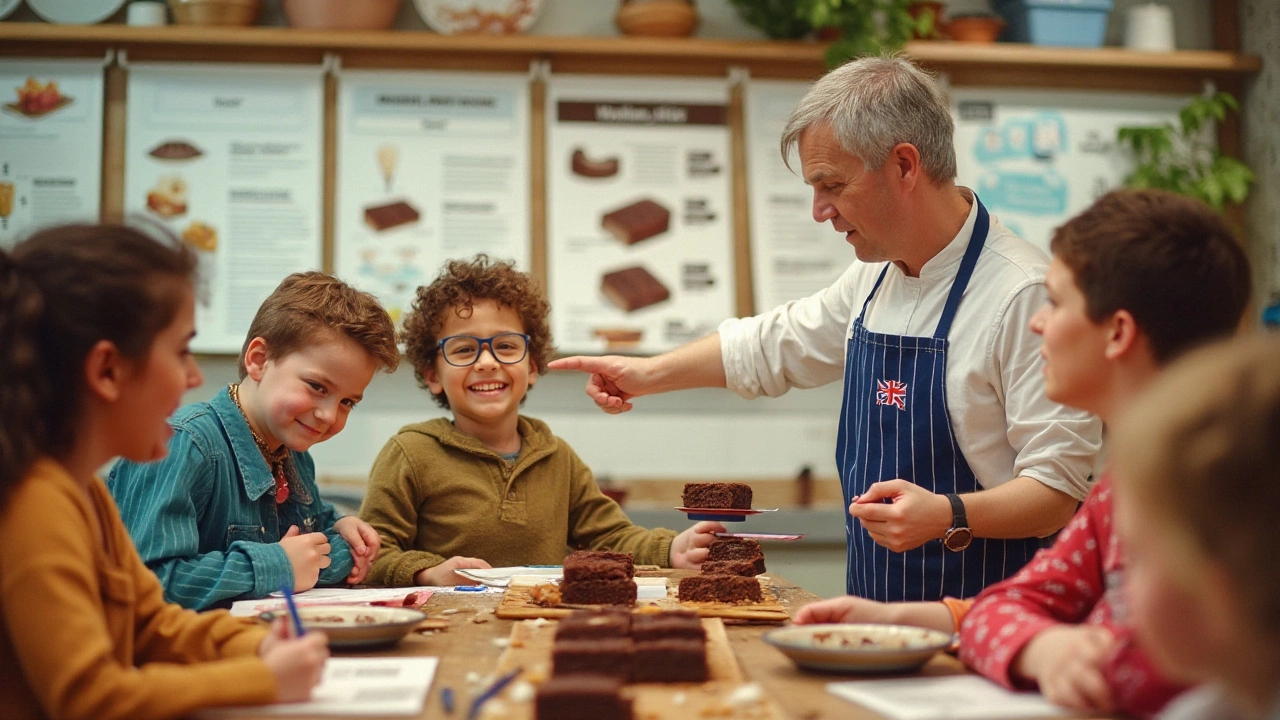
Troubleshooting Hard Brownies
Finding that your carefully baked brownies have turned hard once they've cooled can be discouraging. It's a common issue that even seasoned bakers sometimes face, but do not fret. There are several factors at play when it comes to maintaining that soft and chewy texture we all love. Let's navigate through these potential pitfalls and their solutions, ensuring that your brownies remain a delightful, moist experience.
The first step in addressing hard brownies is scrutinizing your ingredient choice. Using too much flour is a common culprit, as the dry ingredients can absorb excess moisture. It's crucial to follow the recipe measurements precisely and consider using a kitchen scale for accuracy. The type of flour also matters; all-purpose flour can provide structure, but perhaps consider cake flour if your batches frequently turn out rocky. Additionally, the amount of butter or oil you use plays a huge role. These fats not only contribute to moisture but also affect how the batter spreads and reacts while baking.
Baking time is another component you need to pay attention to. Overbaking is the quickest route to dry, hardened brownies. Always keep an eye on them as they bake. It's important to check for doneness a few minutes before the recommended time. You can insert a toothpick into the center; if it comes out with a few moist crumbs, your brownies are done. Remember, they continue cooking a bit as they cool in the pan. A respected pastry chef once said,
"Underbaking slightly ensures the brownies will be perfectly fudgy the next day."This approach might seem counterintuitive, but it’s a tried and true method for achieving that perfect chewy texture.
If you're finding the edges are cooking faster than the center, consider lowering your oven temperature. Some ovens run hot, inadvertently drying out baked goods before they’re properly cooked through. Investing in an oven thermometer can help you gauge the actual internal temperature and make necessary adjustments. Alternatively, opting for a metal pan can provide more even heat distribution, unlike glass pans, which can hold heat longer and contribute to overbaking.
Additionally, the method in which you cool your brownies can impact their texture. Rapid changes in temperature or improper storage right after they’re out of the oven can cause moisture loss. Allow your brownies to cool at room temperature for a while before cutting or moving them. Once cool, store them in an airtight container to keep them from staling and losing that desirable tenderness. If you're planning to enjoy them over a few days, consider wrapping individual pieces in plastic wrap before placing them in a container.
With these troubleshooting tips, you're well-equipped to problem-solve any issues that cause brownies to turn hard. Baking is truly a science wrapped in an art, requiring patience and a dash of intuition. Through experimentation and understanding the underlying factors, each batch reveals a little more about the magical alchemy that transforms simple ingredients into unforgettable desserts.
Enhancing with Add-ins or Toppings
When it comes to brownies, adding a little something extra can make your batch go from good to extraordinary. The charm of add-ins or toppings lies in how they innovate flavor and yield a more engaging texture. Balancing the basic brownie essence with imaginative additions turns your baking into an experiment that's both exciting and rewarding. As you experiment, consider the effect each ingredient has on the overall texture and taste of your brownies.
Adding nuts is classic for a reason. Walnuts or pecans not only introduce a delightful crunch but also bring in a buttery, earthy flavor that complements the dark richness of chocolate. The natural oils in nuts can also help maintain moisture, keeping your brownies chewy. Another worthy contender is chocolate chips. You can sprinkle them on top just before baking or fold them into the batter. This accentuates the chocolate notes without altering the basic brownie chewiness.
For those with a penchant for something unique, consider integrating crushed pretzels or marshmallows. The saltiness of pretzels creates an unexpected contrast with the sweetness of the brownies, while marshmallows add a gooey layer that oozes perfection. Creative bakers might even try swirling in peanut butter or cream cheese before popping the brownies into the oven. These swirls lend an aesthetic allure and provide layered textures that are delightful.
Toppings offer another level of customization. A good drizzle of caramel or sea salt can whisk anyone off their feet. Some might opt for a dusting of powdered sugar or cocoa powder for a minimalist approach. On the other hand, a frosting of ganache or a robust layer of chocolate glaze could transform humble brownies into an elegant dessert fit for any occasion. According to pastry chef Elizabeth Falkner, "Adding layers of texture amplifies the sensorial experience of eating a brownie. It’s like a symphony of flavors and feels in each bite."
Fun Ideas to Try
For a themed experience, you can incorporate your favorite candy bars by either chopping them and adding to the batter or using them as a topping. Crushed oreos, for instance, are popular for their nostalgic appeal and crunch. Experimenting with seasonal fruits like raspberries or cranberries can bring a fresh and tangy profile to your classic batch. With such an expansive array of choices, there’s endless potential to innovate your brownies to cater to different tastes and occasions.Don't overlook specific baking tips for each addition, as certain ingredients require different handling. For instance, adding fruits means accounting for their moisture content so they don’t make the batter too soggy. Preparing toppings or add-ins properly before integrating them into the batter or as a final touch can make the difference between a hit or miss.

